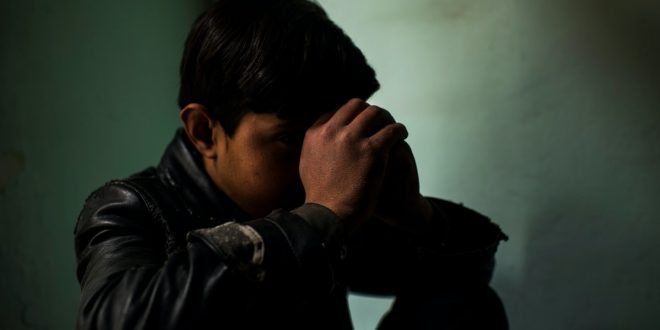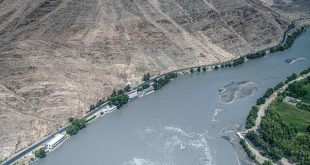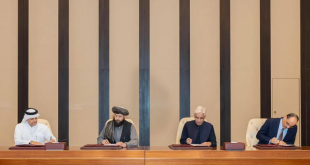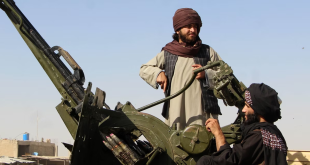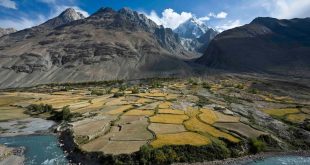AT News
KABUL: The CIA’s Afghan Death Squads is an article published in “The Intercept”. Its writer Andrew Quilty, concluded a research on the CIA backed Afghan unit and its American partners’ operations that are sometimes directed at health clinics, madrassa dormitories, or civilian homes, resulting in killings of civilians and even as young as 10 years old.
Andrew Quilty is a freelance photojournalist and reporter who won a Polk and World Press Photo award. He has been based in Kabul since 2013.
The writer interviewed some residents, firsthand witnesses and relatives of victims. Some of these accounts were corroborated by local officials, analysts and representatives of the community. He quoted the sources privy to issue, who wished to go unnamed because of fearing retribution from the pro-government forces.
According to the article, the operations that resulted in killings of 51 civilians included airstrikes and night raids. The Americans “step on all the rules of war, human rights, all the things they said they’d bring to Afghanistan,” said Wardak provincial council head Akhtar Mohammad Tahiri. They are “conducting themselves as terrorists. They show terror and violence and think they’ll bring control this way.”
The operation is purportedly conducted by the CIA back pro-government forces that are trained, equipped and purportedly given orders by the CIA. The Unit is said to be fallen under the preview of National Directorate of Security. The article includes that the Afghan unit and its American masters have never been publicly held accountable by either the Afghan or U.S. governments.
“I don’t know whether they’re Special Forces or a task force or CIA,” the article quotes an NDS official.
Part I
HE BUZZ OF a drone at night was the first sign of trouble.
Next came the roar of a larger, low-flying aircraft, which alerted residents of the Afghan village of Omar Khail that soldiers were nearby. Men in camouflage moved through the streets speaking Pashto and English. It was December 2018, and the air was frigid. They made their way to the madrassa, or religious school, where more than two dozen boys between the ages of 9 and 18 slept on the floors of several dormitory rooms.
A neighbor watching from a window across the street saw a flash and heard a loud explosion as the front gate of the madrassa was blown open. Inside, the noise awakened 12-year-old Bilal, who was huddled in a room with nine other boys when an Afghan soldier burst through the door.
“Wake up!” the man yelled in Pashto, pointing at the boys one by one with the barrel of his rifle, which was mounted with a flashlight. A second soldier entered, chose the two tallest boys, and led them out the door. The first soldier turned to leave, but before he did, he issued a warning to the rest of the boys cowering before him: “If I find you in this madrassa again, we won’t leave a single child alive.”
Bilal and the others squeezed together as far from the door as they could, with their backs to a large window facing a central courtyard. Many were in tears; others couldn’t speak. From the hallway, Bilal heard words he recognized as English.
“They’re not going to let us live,” a student murmured.
In preparation for death, some of the boys recited the Muslim declaration of faith, known as the Shahada: “There is no God but Allah, and Muhammad is his messenger.”
Just then, the sound of automatic gunfire tore along the corridor. “For a very short time,” Bilal said, it sounded like “there were many guns.” Boys’ screams came next, followed by two loud explosions. “One shook the whole building,” said Bilal. “We didn’t hear anything after this. Everyone was silent.”
When the sun rose hours later, Bilal and about a dozen other students remained crouching in silence, some still trembling with fear. Nearby, in two of the school’s other rooms and in the basement, 12 more boys, their bodies mauled by bullets, lay crumpled on the floor.
HE 12 BOYS KILLED in the madrassa at Omar Khail that winter night were among scores of civilians massacred during at least 10 previously undocumented night raids in the central Afghan province of Wardak. Beginning in December 2018 and continuing for at least a year, Afghan operatives believed to belong to an elite CIA-trained paramilitary unit known as 01, in partnership with U.S. special operations forces and air power, unleashed a campaign of terror against civilians. This story is based on interviews with more than 50 Wardak residents, including 20 survivors and firsthand witnesses and 29 victims’ relatives and local residents who witnessed the aftermath of the killings within hours of when they occurred. Some of those accounts were corroborated by local officials, analysts, and community representatives.
The 10 raids resulted in the deaths of at least 51 civilians, according to The Intercept’s reporting. In most cases, men and boys as young as 8, few of whom appear to have had any formal relationship with the Taliban, were summarily executed. Some died alone, others alongside friends and family. Several raids were accompanied by airstrikes or, in at least one instance, the detonation of hand-laid explosives targeting structures known to be occupied by civilians.
The Intercept has changed the names of those killed in the raids and of the survivors, witnesses, and victims’ relatives we spoke with to shield them from further harm. Some requested anonymity because they feared retribution from pro-government forces, while others worried the Taliban would punish them for speaking candidly to a journalist.
Residents from four districts in Wardak — Nerkh, Chak, Sayedabad, and Daymirdad — spoke of a string of massacres, executions, mutilation, forced disappearances, attacks on medical facilities, and airstrikes targeting structures known to house civilians. The victims, according to these residents, were rarely Taliban. Yet the Afghan unit and its American masters have never been publicly held accountable by either the Afghan or U.S. governments.
The Americans “step on all the rules of war, human rights, all the things they said they’d bring to Afghanistan,” said Wardak provincial council head Akhtar Mohammad Tahiri. They are “conducting themselves as terrorists. They show terror and violence and think they’ll bring control this way.”
Known collectively as strike force units because of their targeted, aggressive methods, the shadowy CIA-backed militias nominally fall under the purview of the National Directorate of Security, or NDS, Afghanistan’s intelligence service. They are comprised of 01, which operates primarily in central Afghan provinces including Wardak and Logar; 02, which is based in Jalalabad and works in the eastern part of the country; 03, also known as the Kandahar Strike Force, which operates in the south; and 04, which conducts raids in Kunar and adjacent provinces in the northeast. Two units in the southeast, the Khost Protection Force and the Shaheen Forces, the latter of which emerged in the eastern Afghan province of Paktika in 2019, are believed to function under similar authority.
The units’ American CIA advisers go by pseudonyms or call signs rather than names. They not only train Afghan unit members, but also choose their targets, which the Americans call “jackpots”; issue detailed pre-mission briefings; and accompany Afghan paramilitaries on the ground during raids. The Afghans and Americans are ferried to remote villages at night by American helicopters, and American assault aircraft hover overhead while they conduct their raids, providing lethal firepower that is sometimes directed at health clinics, madrassa dormitories, or civilian homes.
Madrassa Killings
May 11, 2019, Dadow Khail: Soldiers entered the village madrassa and came out with several boys. “We heard the boys begging for their lives — screaming and crying,” said Safiullah Mahmand, 27. “Then we heard the shooting.” At dawn, an old man discovered a pile of six boys’ bodies at the mouth of an irrigation channel. The youngest victim was 10.
June 29, 2019, Sar Posh: Helicopters descended into a valley, disgorging soldiers who destroyed the home of a local Taliban commander before turning up a narrow valley to the village madrassa. When the shooting and explosions subsided and the soldiers left, locals laid the bodies of nine boys in a row outside. “People said, ‘01 came with Americans in a night raid,’” a victims’ relative told The Intercept. They “went to the madrassa, threw grenades, and killed the students.”
“I don’t know whether they’re special forces or a task force or CIA,” said an NDS counterterrorism officer from Wardak who accompanied 01 on missions until late 2018, but “Americans are always with them.”
The CIA has a long history of training, arming, and funding indigenous militia networks. Since its birth in 1947, the agency has supported anti-communist outfits in Greece, Cuba, Vietnam, Laos, and Central America, as well as the Afghan mujahedeen in the 1980s. Since the September 11 attacks, the CIA has repurposed and supercharged those methods, dispensing training and weapons to supposed allies from Somalia to Syria with dubious results.
But the level of CIA involvement in Afghanistan since the war on terror began has few precedents. In 2013, more than $2.5 billion — nearly 5 percent of the entire U.S. intelligence budget — was allocated for covert action, the category under which the agency’s Afghan strike force unit program falls, according to documents leaked by National Security Agency whistleblower Edward Snowden. From establishing the strike force units to selecting their targets, overseeing their missions, and using special operations forces borrowed from the Pentagon to coordinate air support, the network of CIA-run militias in Afghanistan is perhaps the most dramatic manifestation, apart from America’s well-documented drone program, of the secret war the U.S. intelligence agency is waging around the globe.
The CIA “has long seen [Afghanistan] as their war,” said Patricia Gossman, an associate director for the Asia division at Human Rights Watch who has worked in Afghanistan since the 1990s.
As the U.S. withdraws, the unaccountable militias it has nurtured are beginning to look like a valuable proxy for regular military forces under the leadership of Joe Biden, who as vice president advocated a lighter military footprint and greater focus on counterterrorism in Afghanistan. Biden was credited in 2010 with convincing President Barack Obama to adopt a more aggressive approach in Afghanistan, doubling down on drones, intelligence operatives, and small teams of door-kicking special forces in place of the “hearts and minds” counterinsurgency approach implemented by General Stanley McChrystal and continued under his successor General David Petraeus.
Government officials in Wardak have fielded numerous complaints about 01, but credit them with preventing the Taliban from mounting devastating attacks in nearby Kabul and massing in the kind of numbers they would need to overrun a town like Wardak’s capital, Maydan Shahr. “They are the only unit that can secure [these] places,” said a senior government official from Wardak’s Nerkh District. He blamed Taliban propaganda for promoting false claims about civilian casualties to turn the population against the government.
Several 01 raids in Wardak targeted homes occupied by families, but even more common were assaults on mosques and madrassas. The Intercept documented four separate raids on madrassas that killed 33 religious students. While some Wardak residents conceded that Taliban fighters visit madrassas to try to persuade students toward jihad, the schools mainly house children whose youth, poverty, and physical distance from their families leave them especially vulnerable.
A CIA-Backed Militia Targeted Clinics in Afghanistan, Killing Medical Workers and Civilians
The prevalence of boys among those killed in Wardak indicates that 01 was trying to eliminate not only existing enemies, but potential future foes as well. The deliberate and recurring violence of strike force units resulted in a spattering of media reports documenting atrocities against civilians. But aside from a handful of raids targeting health clinics run by an international aid organization, details of the trail of blood and terror left by 01 in Wardak have not been previously reported.
In the fall of 2019, The Intercept shared its findings about the Omar Khail madrassa raid and others with Afghanistan’s national security adviser, Hamdullah Mohib. “It really pains me to hear [of these incidents],” Mohib said, “and unfortunately they have not made it to my desk. No one has reported them.” He went on to say, by way of explanation, that 01 “is a unit that operates, as you know, in partnership with the CIA.”
“Quite frankly, I’m not fully aware … of how they work,” Mohib told The Intercept. “We’ve asked for clarification on how these operations happen, who are involved, what are the structures of this. When they were set up, why are they not in Afghan control?”
He said he was awaiting a report that might answer his questions, but it is unclear whether the report ever came. “I am sorry to inform you that I [still don’t] have anything for you,” his spokesperson told The Intercept in September.
Other senior national security officials either refused to comment for this story or ignored multiple requests. The CIA declined to comment on a detailed list of the raids or any related questions. NDS and the American-led military mission in Afghanistan refused to engage on the topic at all.
“We’ve asked for clarification on how these operations happen, who are involved, what are the structures of this. When they were set up, why are they not in Afghan control?”
HE UNCHECKED VIOLENCE of 01 was in line with U.S. President Donald Trump’s increasing normalization of war crimes. Since late 2019, Trump has overruled senior military commanders who sought to discipline a Navy SEAL for inappropriate and criminal actions, rolled back a ban on the U.S. military’s use of land mines, and pardoned soldiers convicted or accused of murdering Afghans. In September, the U.S. sanctioned senior officials from the International Criminal Court in response to its investigations into whether U.S. forces committed war crimes in Afghanistan. Secretary of State Mike Pompeo called the court’s efforts “illegitimate attempts to subject Americans to its jurisdiction.”
Soon after his January 2017 inauguration, Trump ordered his national security advisers and then-Defense Secretary James Mattis to come up with a new strategy to fulfill an election promise: withdrawing from Afghanistan.
Trump’s plan for pulling out relied on a minimal number of elite troops using brute force tactics to coerce the Taliban into negotiating from a position of weakness. Tactical directives adopted in 2007 and strengthened by three successive Obama-era U.S. military commanders in Afghanistan — before being slightly loosened in 2010 under Gen. David Petraeus — had been designed to reduce civilian casualties, but the Trump administration further relaxed those directives, expanded the authority of battlefield commanders, and deployed 3,000 more American troops.
In an August 2017 speech unveiling his new Afghanistan and South Asia strategy, Trump defended his approach, pointing to the “dramatic results in the campaign to defeat ISIS” achieved under the same directives in Iraq, where the battle of Mosul was winding down, and where, according to Airwars, coalition air or artillery strikes led to a conservative minimum of 1,066 civilian deaths between October 2016 and July 2017.
In October 2017, Pompeo, then-director of the CIA, indicated that the agency, too, would pursue a more hawkish posture. The CIA, he said, “must be aggressive, vicious, unforgiving, relentless.” Pompeo did not specify where the new stance would take effect or with whom, instead referring generically to “partner services throughout the world.” Soon after, the CIA reportedly expanded its activities in Afghanistan, working closely with Afghanistan’s NDS and American special operation forces to hunt targets previously considered below their pay grade.
The diplomatic part of the strategy emerged a year into Trump’s presidency, when his administration sidelined the Afghan government and began negotiating directly with the Taliban in Doha, Qatar. In September 2019, Zalmay Khalilzad, an Afghan-born American diplomat serving as U.S. special representative for Afghanistan reconciliation, announced that the U.S. had reached a preliminary deal “in principle” with Taliban leadership. Experts expected the agreement to lay out a withdrawal timeline for international forces, lead to talks between insurgent leaders and the Afghan government and, hopefully, end the war. But Trump called off the talks abruptly after an American soldier was killed in a suicide bombing on September 8, 2019. That same day, Pompeo, who had since been elevated to secretary of state, said that more than 1,000 Taliban members had been killed in the past 10 days, vividly illustrating the contrast between the rhetoric of peace and the escalating battlefield violence.
By this time, the parameters that had limited the use of U.S. counterterrorism tactics to hunting Islamic State, Al Qaeda, and high-level Taliban targets had long-since been abandoned. “We are not nation-building again,” Trump had said in his 2017 speech. “We are killing terrorists.” Analysts reasoned that Trump’s escalation of force was aimed at diminishing the Taliban’s standing at the negotiating table. But American enemies weren’t the only ones paying a price in Afghanistan.
In the first half of 2019, for the first time since they began counting a decade ago, the United Nations Assistance Mission in Afghanistan said pro-government forces were responsible for more civilian deaths than the Taliban. The talks in Doha resumed in December 2019. On February 29, following the success of a weeklong ceasefire, the Taliban and the U.S. signed an agreement that all sides hoped would pave the way to ending the war.
After the peace deal was inked, the strike force units appeared to vanish.
The period in which The Intercept documented the escalation of violence in Wardak falls neatly between the first round of formal U.S.-Taliban talks in late 2018 and the signing of the Doha agreement early this year. The rate of 01 night raids, and the number of civilians killed as a result, fell dramatically last winter and stopped almost entirely this spring. Spokespeople from both the CIA and NATO-led Resolute Support declined to say whether there was a correlation between the end of the raids and the signing of the Doha agreement, but the timing is hard to ignore. After the peace deal was inked, the strike force units themselves appeared to vanish. A security analyst told The Intercept that, apart from one operation in May, she’d have thought “the earth had swallowed them whole.”
That was a major shift from 2019, when targeted night raids and airstrikes were being used countrywide against low-level Taliban field commanders, rank-and-file fighters, heroin cooks — seemingly, anyone whose daily activities brought them into contact with the insurgents. In much of rural Afghanistan, that meant not only grown men, but boys as well.
More than 6,000 madrassas are registered with the Afghan government, but many others operate in areas beyond their control. A journalist from Wardak, who asked not to be named because of the sensitivities of working in the province, estimates there are up to six madrassas in each of the four predominantly Taliban-controlled districts where The Intercept documented civilian deaths. Madrassas have long been ripe recruiting grounds for militants. Most students come from poor families, and although some madrassas incorporate nonreligious classes, few boys receive formal education outside the religious schools.
“Madrassas are mostly considered the epicenter of [the] Taliban,” said Fazal Muzhary of Afghanistan Analysts Network, an independent research organization based in Kabul. Taliban, after all, means “religious students,” and the group’s earliest recruits were drawn from madrassas in Afghanistan and Pakistan. But most madrassas in Afghanistan have rules banning weapons that are generally respected by local fighters. “Some [madrassa students] will join us but this is up to them,” Mullah Abdul Rahman, a Taliban commander in Daymirdad District, told The Intercept in November.
01 may target religious students because they know the Taliban recruit from madrassas and so assume guilt by association, said Gossman, of Human Rights Watch. As a result, beginning in 2019, some Wardak families forbade their boys from studying in madrassas, while others moved out of the province altogether. While security forces can search madrassas and arrest suspects under international law, Gossman said, the cases documented by The Intercept “appear to be summary executions.” “
Taliban Peace Talks Must Not Ignore CIA-Funded Afghan Militias, Report Says
The future role of CIA operatives and the Afghan units they advise is a critical area of the peace deal with the Taliban, but no details about it have been made public. Taliban leaders have reportedly demanded reductions in the CIA presence in Afghanistan, but it’s unclear whether the issue was included in the agreement’s classified annexes, which have only been viewed by top Taliban and U.S. officials and a handful of members of Congress. Some Trump administration officials sought to increase the CIA’s footprint as the military withdrew, a move the Taliban and the Haqqani network, its powerful and violent affiliate in eastern Afghanistan, have long opposed.
The CIA is already allowing the strike force units to conduct operations on “a fairly loose leash,” says Erica Gaston, a nonresident fellow with the Global Public Policy Institute in Berlin. “I don’t think any Afghans have authority over them,” Gaston said.
Even if regular U.S. forces pull out, the CIA could maintain the operational capacity of some of its Afghan surrogate units. “The well-trained and well-equipped CIA militias would be particularly valuable” and “constitute a formidable set of actors in their own right,” a 2019 Watson Institute for International and Public Affairs report notes. “Given their highly paid and somewhat privileged status, they are unlikely to welcome a drastic reduction in pay that would accompany integration into the regular armed forces or demobilization. If cut loose by the CIA, they may be reborn as private armies … in the service of powerful individuals.”
HE TALIBAN’S PRESENCE in Wardak is discreet but pervasive. The provincial capital, Maydan Shahr, lies about 30 miles southwest of Kabul. A wedge of shops and homes between two highways that meet at a roundabout, it is more thoroughfare than city. Maydan Shahr’s decrepit bazaar is a shamble of one and two-level clothing stores with gaudy girls’ dresses hanging in windows, fronds of rebar sprouting from roofs, and kebab restaurants spewing greasy blue smoke.
The larger of the two highways, nominally under government control, follows the wide Wardak valley south, leading eventually to Kandahar. Beyond Maydan Shahr, in Wardak’s rural districts, police occupy a dwindling number of checkpoints along the highway but are scarcely visible on the road nowadays, even during daylight hours. Surviving a trip outside their base after dark now is a virtual coin-toss, according to several members of the ANSF, or Afghan National Security Forces, in Wardak.
This year, since the U.S. agreed to curtail the use of air power, the Taliban regularly detonate roadside bombs, mount ambushes against government military convoys, and set up temporary checkpoints, searching cars for government workers before melting back into the landscape. In the mountains after dusk, dim lamps can be seen trickling down the valleys like leaves in a stream. Those lights are the Taliban, the commander of a police outpost near Maydan Shahr told The Intercept one night in August, “coming down from the mountains.”
“The rest of [Wardak] is done. It is with the Taliban. Maydan Shahr is all that’s left.”
In Wardak’s southern districts, the government’s presence is limited to a handful of besieged buildings. The governors of three of those districts live in exile in Kabul, traveling to their constituencies once or twice a month in heavily armed convoys, or whenever a helicopter is available.
During last year’s presidential elections, a total of 73 votes were counted across all of Wardak’s Nerkh District, according to a senior government official from Nerkh. “All of those were ANSF,” said the official, who asked not to be named because he feared repercussions for speaking openly. Even the election staff had to be carried in and out by helicopter. The embarrassingly low turnout was due at least in part to explicit Taliban threats not only to election officials, but to voters as well. Days before to the vote, the insurgent group issued a statement dismissing it as a “fraudulent process … undertaken to mislead the people … and secure [the] interests of the invaders.”
“The rest of [Wardak] is done,” the veteran NDS officer from the province told The Intercept. “It is with the Taliban. Maydan Shahr is all that’s left.”
Raids by 01 were part of the problem, some residents say. “The more they terrorize, the more our numbers increase,” Taliban spokesperson Zabihullah Mujahid told The Intercept. “Such attacks will have no adverse effect on morale of our mujahideen. On the contrary, they have a positive effect.” The Taliban is known to exaggerate facts and figures for propaganda purposes, but the correlation between misconduct by foreign forces and Taliban recruitment is well documented.
In a rare alignment of views, Mohib, the Afghan national security adviser, concurred that the strike force units were undermining government efforts to defeat the Taliban. “I personally disagree with how we conduct counterterrorism,” Mohib said in an interview last year. “I think the way we address grievances needs to change and we need to look into why people are fighting and what can be done to encourage them otherwise.”
(To Be Concluded)
 Afghanistan Times Latest News and Analysis from Afghanistan and the Region
Afghanistan Times Latest News and Analysis from Afghanistan and the Region
